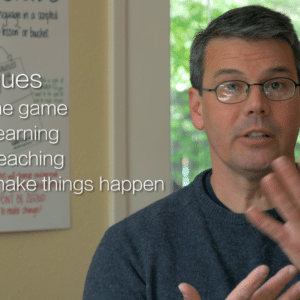While language hunting, when you periodically discover single words and concepts in your target language, you ask for them to be included in a Craig’s List (CL) of like concepts/words, accelerating your movement through the language and raising the chances of remembering the single word you discovered.
Lists are an ancient mnemonic.
There are many examples of listing in oral tradition – human memory loves groups, lists, and categories, bringing like things together.
Craig’s Listing (CL) is the act of creating, sharing, and improving these lists. We use the name because it often gets a laugh, referring to the well-known online classified ads, in which you can find long lists of ads grouped together under categories like housing, work, and personals.
It’s also worth noting that “listing” is one of the main symptoms of the perennial Novice – the language student struggling to get out of the hole of lists of nouns and memorized phrases that is holding them back from real conversation.
It’s therefore important to remember that CL are for grouping words together that you plan to throw into a conversation as soon as the opportunity opens, not a way to hoard nouns or other pieces of language structure. It’s like the difference between a deck of flash cards, and a deck of playing cards. The flash cards are stuck in a list that you repeat over and over; the playing cards get thrown on the table as you jockey to win the game.
One particularly fun and effective way to wield a CL is to put it all into a sentence or paragraph, wielding tq two (or more) words same sentence, such as with the CL Want/Have/Give/Take:
“I want to have your pen, if you don’t give it to me I’ll take it from you!”
You’ll notice the words are in order too, demonstrating your full knowledge of the order and length of the list.
CL can grow as you learn more words that belong together – in theory there is no limit on the length of a Craig’s list. CL can also be improved, split apart, the order changed, and so on, all in the spirit of what works the best – what accelerates most the language hunt and race to Superior proficiency.
Introducing the technique in language acquisition
Short: “Technique: Craig’s List. Information presented in lists, according to like genre. Rather than single words here and there, we’ll always give you them in lists of connected words.”
Applying the technique in language acquisition
• Every time a player forgets a single word from the CL, run through the whole CL.
• Every time you run through a CL, do it tq In Threes.
• Start CL as short as possible, just 2, 3, or 4 words, and add to them as you hunt deeper into the language.
• You can also combine CL with tq Slow/Fast, starting slow and slowly speeding up, going so fast at the end that the whole group is forced to call “How Fascinating!”.
But what about…?
You can’t separate a CL from the conversation it belongs to – they are connected. Practice each in concert, rather than separately. In the end, Craig’s list is not a set of already developed perfect lists that you are required to duplicate for every language, but a skill for developing them on the fly while hunting a target language.
Use what you know to make ‘sticky’ new CL’s quickly and effortlessly.





